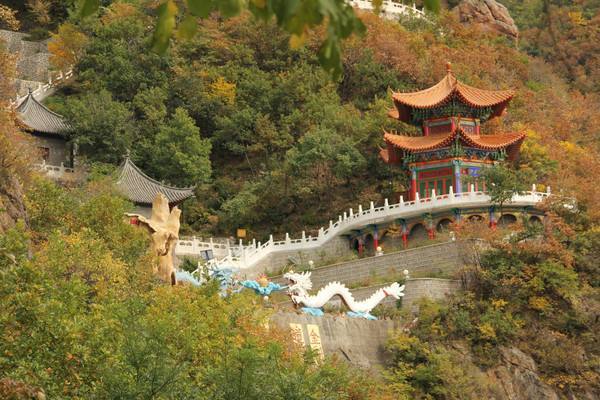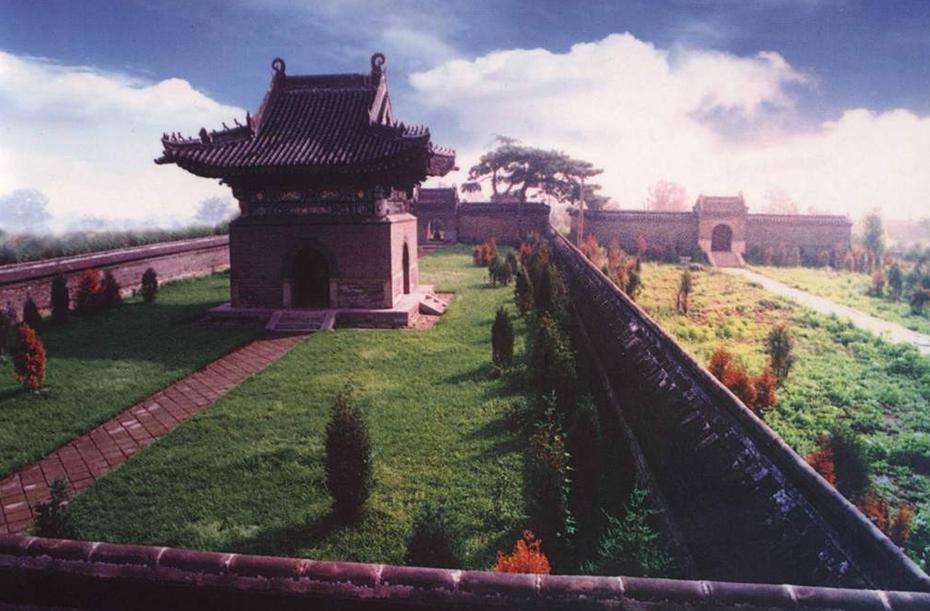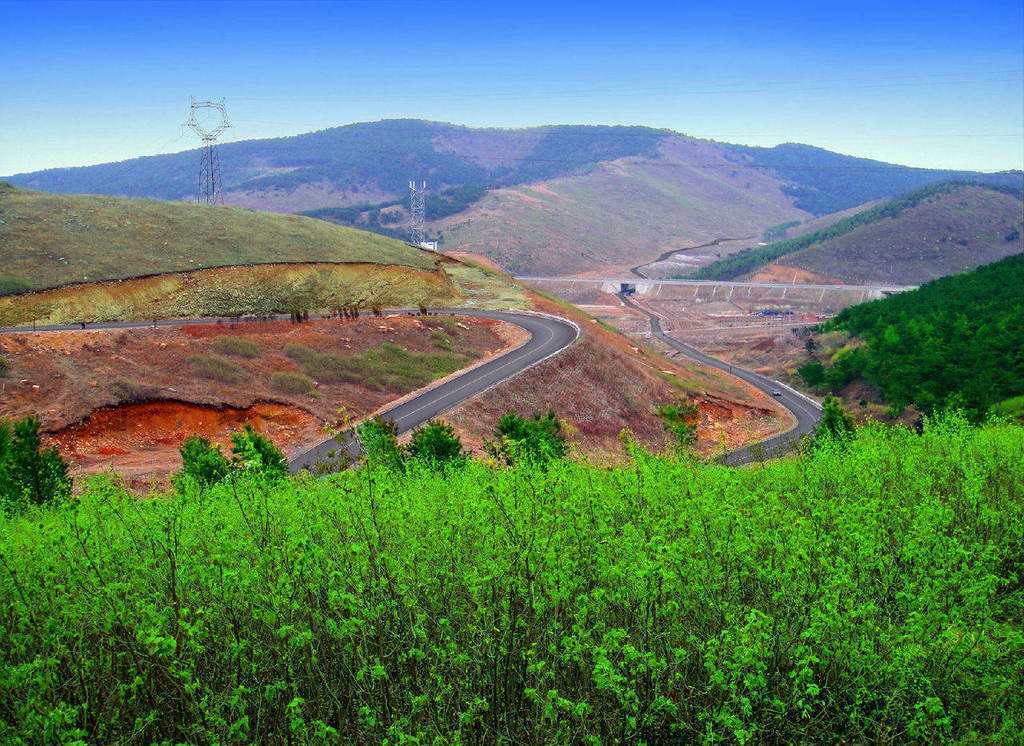Cao Xueqin Memorial Hall is located at No. 2, Woshi Hutong, Liaoyang City. It is established on the basis of the Wu Mansion, a Qing Dynasty building, and is a municipal-level cultural relic protection unit. The memorial hall is a two-entry courtyard with 21 hard-roofed tile rooms, and there is a statue of Cao Xueqin in the courtyard. The exhibition rooms in the memorial hall collect and display historical archives related to the Cao family, poems by Cao Xueqin's grandfather Cao Yin, the Cao family genealogy, Qing Dynasty palace archives, and a series of other documents. In addition, there are multiple versions of 'Dream of the Red Chamber' and paintings and calligraphy by famous artists from across the country based on 'Dream of the Red Chamber'. The entire exhibition hall is a Qing Dynasty building, with couplets in each exhibition room. The front door has a gold plaque inscribed with 'Cao Xueqin Memorial Hall' by the famous Redology expert Feng Qiyong.
Longding Mountain
Longding Mountain is a place with beautiful mountains and rivers, and a sea of pines. It is filled with magical stories everywhere. Longding Mountain has two main peaks running north to south, which are far apart. Between the two main peaks, there are hundreds of acres of open and flat grasslands. Currently, the Longding Mountain scenic area has a 15-li long ring road around the mountain, as well as facilities such as a small conference hall and entertainment venues. In the mountain, there is a 'Zhonggu Tower' with an ancient bell hanging inside. The highest peak of Longding Mountain has an octagonal double-eaved pavilion. Climbing up the steps, you can overlook the city of Liaoyang from the pavilion. Longding Mountain is the site of an ancient beacon tower. Based on this, a 260-meter-long section of the ancient Great Wall and a beacon tower have been restored. At the foot of Longding Mountain, a dam has been built to intercept water, forming an artificial lake called 'Dongshan Lake'. Fish fry are stocked in the lake, providing visitors with the opportunity to fish.
During the early Qing Dynasty, in the era of the founding emperor of Liaoning and Shenyang, the Dongjing Mausoleum was once the ancestral mausoleum of the royal family and held significant importance in the history of the Qing Dynasty's development. After Nurhaci moved the capital to Liaoyang, in the ninth year of the Tianming era of Later Jin (1624), he relocated the tombs of his grandfather, brothers, sons, and more than ten others from Hetu Ala to Yanglu Mountain, located 4 li northeast of Dongjing City, establishing the 'Dongjing Mausoleum' in the ninth year of the Tianming era of Later Jin (1624). In the eleventh year of the Shunzhi era of the Qing Dynasty (1654), the tombs of Nurhaci's grandfather's generation were moved back to their original location in Hetu Ala City, Qing Yongling. Currently, there are four tombs in the Dongjing Mausoleum of Nurhaci's brother Shulhazi, his eldest son Cuyen, his concubine's brother Murhazi, and his son Dalcha. The mausoleum contains stone walls, a mountain gate, and a stele pavilion. The stone pavilion is well-preserved, built in front of Shulhazi's tomb, featuring a single-eaved hip-and-gable roof with four arches. The interior is decorated with caisson ceilings, and the pavilion houses a marble stele inscribed with 'Zhuang Darhan General Tulu Prince Stele' in both Chinese and Manchu scripts, with clear inscriptions and exquisite carvings.
Liaoyang Shidonggou Forest Park
Located in Shuguang Qianjin Village, Section 5 of Zhonghua Street, Liaoyang City, Shidonggou Forest Park is situated 9 kilometers southeast of the urban area in Taizihe District. The scenic area is composed of Daboshan, Jinzuoshan, Shuangduishan, Shidong, Langdong, and Shizhugou. Surrounded by mountains and dense forests, Shidonggou Forest Park boasts nearly a hundred peaks. To the south lies Jinzuoding, offering beautiful scenery. The park also features a forest specimen garden, forest corridor, forest bath, forest cabins, forest restaurant, dance hall, sauna, and other tourist facilities, providing dining and accommodation services.
Liaoyang Longfeng Mountain Scenic Area
Longfeng Mountain is located in Xiadahe Township, Liaoyang County, Liaoyang City, 35 kilometers away from the urban area of Liaoyang City. It is a national 3A-level tourist attraction situated between Qianshan Scenic Area and Tanghe Reservoir Scenic Area. There is Longfeng Temple in the mountain. Longfeng Mountain is also known as Jingang Mountain, characterized by its overlapping peaks and unique, steep terrain. The Jiulong River with its clear waters winds around the foot of the mountain. Natural landscapes in the mountain include Longtou Peak, Dajingang Peak, Erjingang Peak, Jinchan Yingxu, Xigui Wangyue, Woshi Peak, Rentou Peak, Baiyun Cave, Yitian Yijing, Yingkesong, Jiulong River, Longtan Weeping Willow, Laojun Pond, Laojun Guishi, and more, collectively known as the 28 Sceneries of Jingang Mountain. Recently developed water entertainment projects, as well as newly constructed roads and parking lots, are available at the foot of the mountain.













